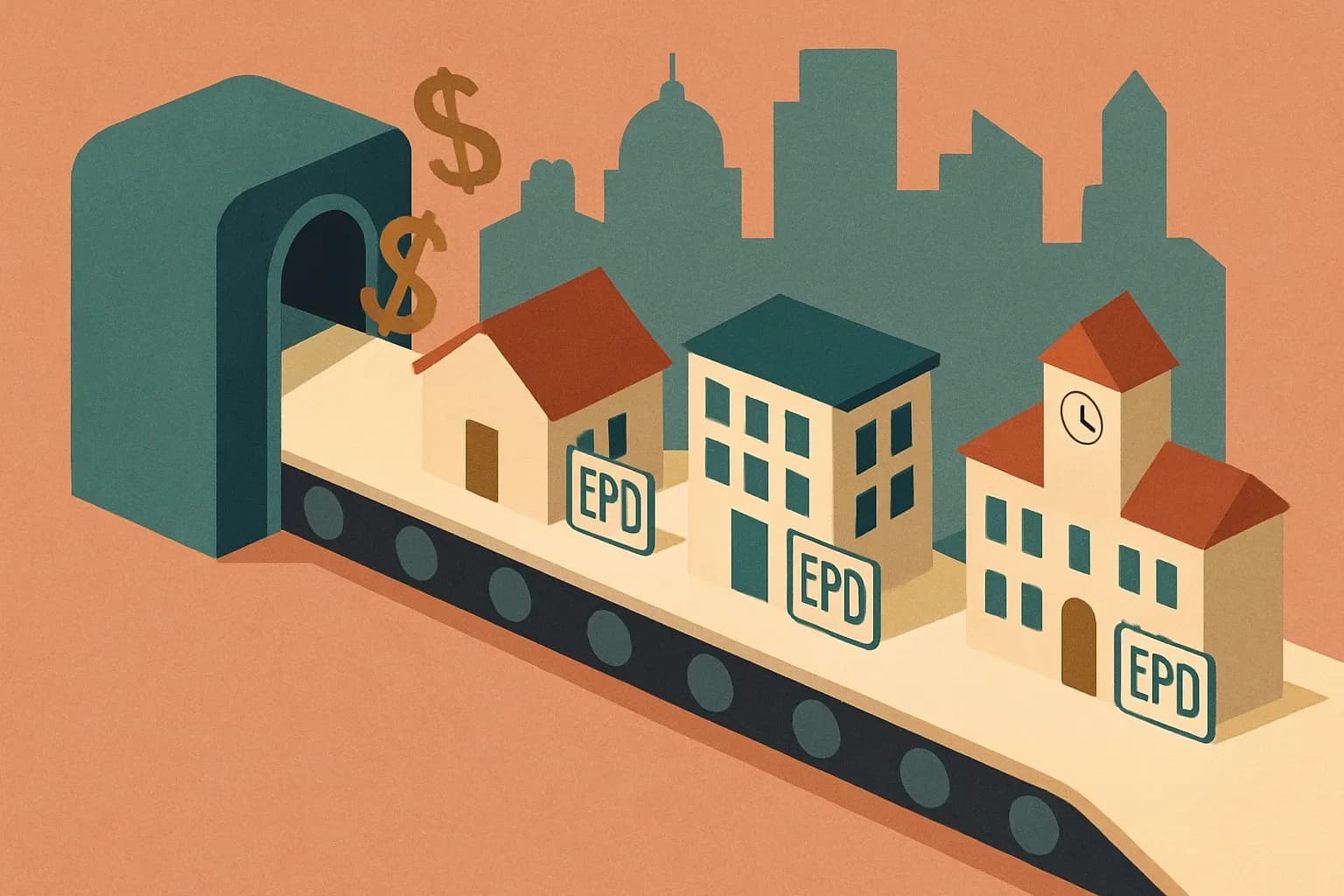Washington’s 2025 Capital Budget: EPD Stakes Rising
Olympia just green-lit $7.6 billion in bricks, wires, and rebar for the 2025-27 biennium (HB 1216/SB 5195, 2025). That cash comes with strong Climate Commitment Act strings and the Buy Clean & Buy Fair reporting law. If your concrete, steel, or mass-timber shows up without a recent EPD, you’ll watch those dollars march past you to a rival.


What did lawmakers actually pass?
HB 1216 (House) and SB 5195 (Senate) form Washington’s omnibus capital budget. The final package authorizes $7.6 billion in state spending backed by $4.6 billion in new general-obligation bonds (HB 1216 Bill Report, 2025). Roughly five percent is earmarked for climate-tagged projects under the state’s Climate Commitment Act, with explicit set-asides for public-building upgrades, EV charging, and industrial decarbonization (Clean & Prosperous WA, 2025).
Why should manufacturers care?
Every dollar in the capital budget funds a project owned by the state or its colleges. Those projects now fall under Washington’s Buy Clean & Buy Fair law, signed in 2024, which demands environmental-impact reporting for concrete, steel, and engineered wood on large buildings (Commerce BCBF, 2025). Translation: no compliant EPD, no purchase order.
The materials in the spotlight first
- Concrete mixes (ready-mix and precast)
- Structural and reinforcing steel
- Mass-timber and glulam products
Agencies must capture global-warming potential from cradle-to-gate for each of these. The reporting form borrows EN 15804 impact categories, so one generic Type III EPD per mix or mill heat rarely cuts it.
Data clocks are already ticking
Departments break ground as early as July 1, 2025. Design teams need declared impacts locked in before 90-percent construction documents to avoid change orders. Some specifiers are stapling GWP performance targets to bid packages months ahead.
Getting ready without derailing production
- Audit plant utility bills and material flows for a clean reference year.
- Match the PCR your competitors use—jumping to an obscure rulebook slows review.
- Pick a partner who can yank ERP data, utility meters, and QA sheets straight into LCA software. Two-week data sprints beat six-month email marathons.
- Keep renewal dates on radar; a PCR refresh in 2026 could requre a quick EPD update.
Zoom out
Washington is treating embodied carbon like public safety: mandatory, measurable, and funded. Master EPDs now, and you not only chase $7.6 billion in state work but also stay ahead of HB 1458, which aims for a 30 percent embodied-carbon cut in the 2030 building code (HB 1458, 2025). Miss the window and someone else will pour the concrete.
Frequently Asked Questions
Which building materials are covered by Washington’s Buy Clean & Buy Fair law?
Concrete (ready-mix and precast), structural and reinforcing steel, and engineered wood/mass-timber used in large state-owned buildings.
Do EPDs need to follow EN 15804 or ISO 21930?
Either works today, but most Washington specifications cite EN 15804 for easy comparison across bids.
Is there a blanket GWP limit yet?
Not in the 2025 capital budget. Agencies are still in the data-collection phase, but draft benchmarks are expected by late-2026.
How often must an EPD be renewed to stay eligible?
Every five years under ISO 14025, or sooner if the underlying PCR expires and is replaced.
Will small suppliers under 1 % of project cost be exempt?
Possibly. Commerce is considering de-minimis thresholds, but final guidance is pending.
